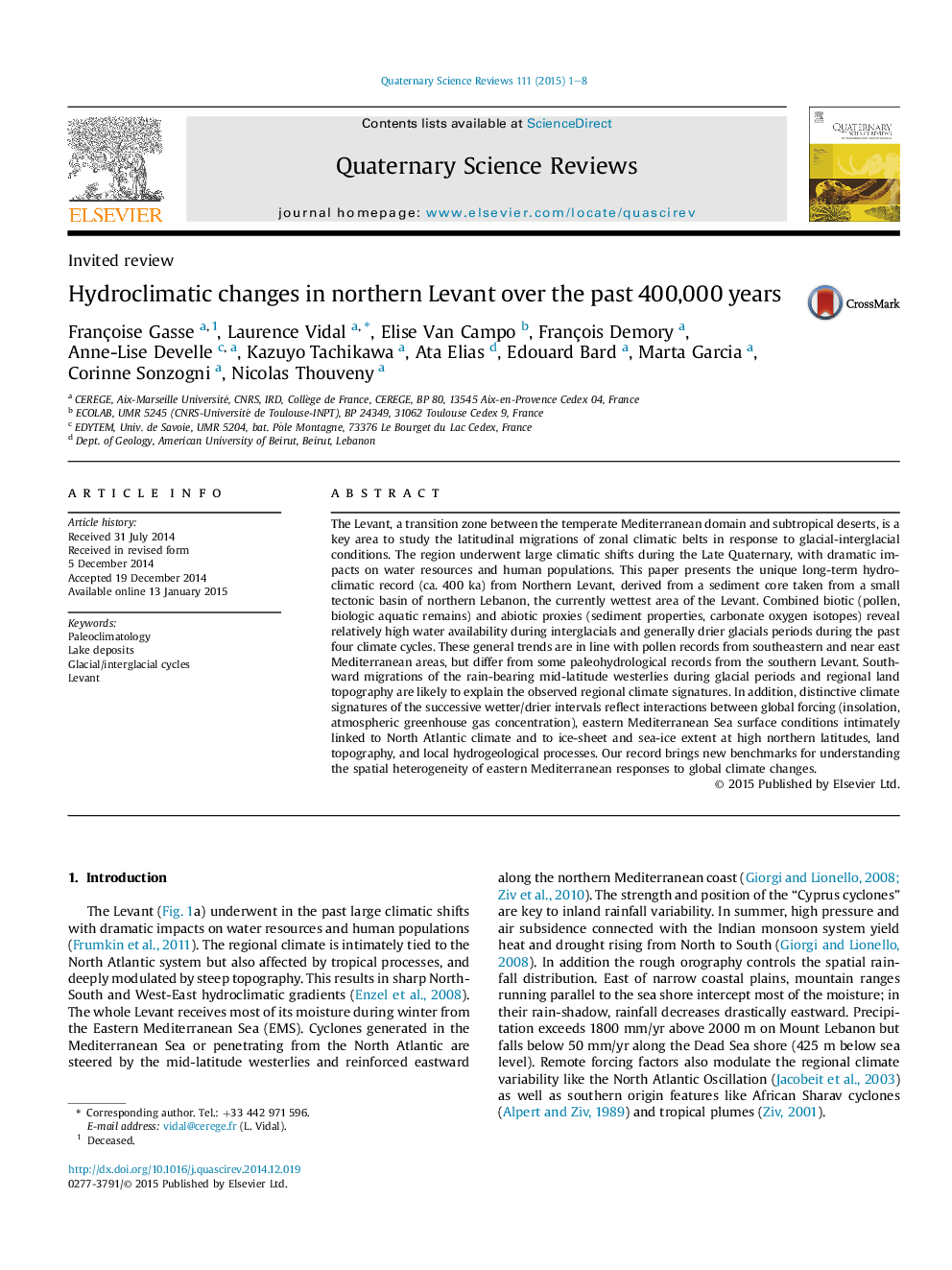| کد مقاله | کد نشریه | سال انتشار | مقاله انگلیسی | نسخه تمام متن |
|---|---|---|---|---|
| 4736183 | 1640823 | 2015 | 8 صفحه PDF | دانلود رایگان |

• The study presents a ca. 400,000 years hydroclimatic record for the northern Levant.
• The record comes from a small lake basin in northern Lebanon.
• Interpretation is based in the combination of palynology, sedimentology and oxygen isotopes.
• Our study shows generally wetter interglacial than glacial conditions in the northern Levant.
• We report differences in glacial/interglacial cycles in response to various climate forcing factors.
The Levant, a transition zone between the temperate Mediterranean domain and subtropical deserts, is a key area to study the latitudinal migrations of zonal climatic belts in response to glacial-interglacial conditions. The region underwent large climatic shifts during the Late Quaternary, with dramatic impacts on water resources and human populations. This paper presents the unique long-term hydroclimatic record (ca. 400 ka) from Northern Levant, derived from a sediment core taken from a small tectonic basin of northern Lebanon, the currently wettest area of the Levant. Combined biotic (pollen, biologic aquatic remains) and abiotic proxies (sediment properties, carbonate oxygen isotopes) reveal relatively high water availability during interglacials and generally drier glacials periods during the past four climate cycles. These general trends are in line with pollen records from southeastern and near east Mediterranean areas, but differ from some paleohydrological records from the southern Levant. Southward migrations of the rain-bearing mid-latitude westerlies during glacial periods and regional land topography are likely to explain the observed regional climate signatures. In addition, distinctive climate signatures of the successive wetter/drier intervals reflect interactions between global forcing (insolation, atmospheric greenhouse gas concentration), eastern Mediterranean Sea surface conditions intimately linked to North Atlantic climate and to ice-sheet and sea-ice extent at high northern latitudes, land topography, and local hydrogeological processes. Our record brings new benchmarks for understanding the spatial heterogeneity of eastern Mediterranean responses to global climate changes.
Journal: Quaternary Science Reviews - Volume 111, 1 March 2015, Pages 1–8